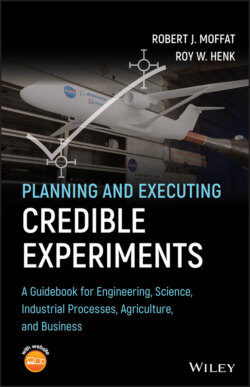Читать книгу Planning and Executing Credible Experiments - Robert J. Moffat - Страница 40
2.4.5 Similarity and Dimensional Analysis
ОглавлениеNature does not know how big an inch is (unless you experiment on inchworms), nor how big a centimeter is. The laws of physics are independent of the length, mass, and time scales familiar to us. For this reason, similarity analysis and the Buckingham Pi Π method are tools to cast the physics into nondimensional parameters which are independent of scale.
Perhaps the most familiar nondimensional parameter is the Mach number, the ratio of speed to the speed of sound. A fighter flying at Mach 2 is traveling at twice the speed of sound.
In thermo‐fluid physics, we use various nondimensional parameters, including Reynolds number (Re), Strouhal number (St), Froude number (Fr), Prandtl number (Pr), Mach, etc. We will see these again in later chapters. The Reynolds number is a ratio relating size, speed, fluid density, and viscosity. When NASA tests a model plane in a wind tunnel, it matches the Re of the model to that of the full‐size plane. Experimental results for the model plane and full‐size plane relate even better by simultaneously matching Mach number. And so forth as more parameters match.
As an expert in your field, you know which nondimensional parameters pertain to your experiment. The applicability of your measurements expands via nondimensional parameters. In your experiment, plan to ensure that you record all the factors, including environmental factors, so that all pertinent nondimensional parameters can be reported.
Upon reflection, the value percent (%) is likely the most familiar nondimensional number.
